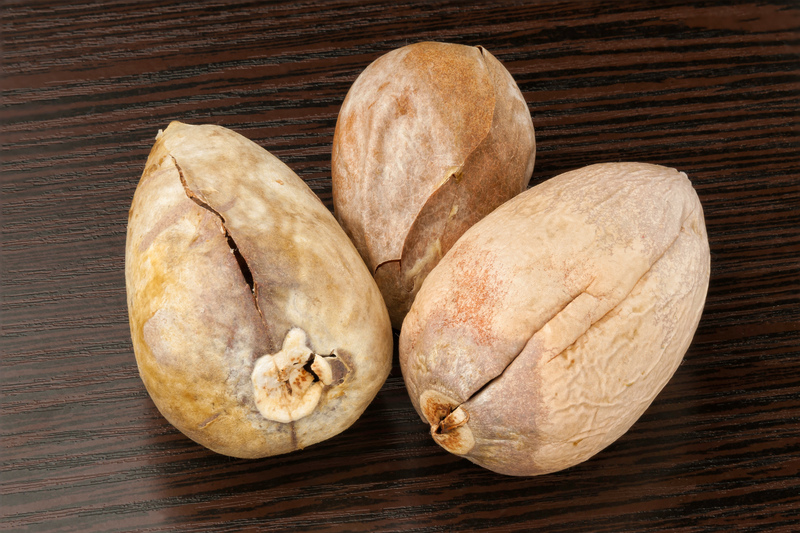Hidden Tricks for Efficient Tree Stump Extraction
Are stubborn tree stumps turning your beautiful landscape into a headache? Efficient tree stump extraction can seem like a daunting task, especially for homeowners determined to have a pristine, obstacle-free lawn. But what if you had access to some hidden tips and little-known methods that expert arborists and seasoned gardeners use for removing tree stumps with minimal effort and expense? In this comprehensive guide, we uncover these secrets to help you reclaim your yard, save money, and avoid unnecessary frustration.

Why You Should Remove Tree Stumps Efficiently
Before diving into tree stump removal tricks, let's understand why quick stump extraction matters:
- Prevents Safety Hazards: Leftover stumps can cause tripping accidents or damage mowing equipment.
- Stops Pest Infestation: Decaying stumps attract termites, ants, and other unwanted pests.
- Enhances Curb Appeal: A smooth, clear lawn instantly boosts the look and value of your property.
- Prevents Unwanted Growth: Shoots and suckers can sprout from an untended stump, causing new tree growth in unwanted places.
Understanding Tree Stump Anatomy
To master efficient stump removal, it's vital to grasp the structure of a stump:
- Stump: The visible section of the tree base left after cutting.
- Surface Roots: Thicker, horizontal roots extending outward just beneath the ground.
- Taproot: A deep central root running vertically down, often present in hardwood species.
Being aware of these features helps you choose the proper technique and apply force where it counts most.
Common Tree Stump Extraction Mistakes to Avoid
Many homeowners make costly errors during tree stump extraction. Here are some mistakes you can avoid:
- Underestimating Root Spread: Roots often extend further than expected, complicating the extraction process.
- Improper Tools: Using the wrong equipment increases labor and could cause injury or damage to the surrounding area.
- Ignoring Safety Precautions: Not wearing gloves, boots, and eye protection raises the risk of accidents.
- Trying to Burn Stumps Without Permits: Local fire ordinances usually restrict open burning; violating these attracts fines.
- Skipping Stump Grinding: Sometimes, grinding is the only feasible solution - attempting only manual methods wastes energy.
Secret Techniques for Efficient Tree Stump Extraction
1. Leverage Physics: Use a Winch System
One of the best hidden tricks for tree stump removal is exploiting mechanical leverage. Arborists often use a hand winch or come-along attached to a sturdy anchor, like another large tree or a vehicle. Here's how:
- Excavate around the stump base, cutting as many lateral roots as possible with an ax or pruning saw.
- Wrap a heavy-duty chain around the stump base (not the midsection--which may break under tension).
- Attach the chain to a manual winch or vehicle, then apply steady pressure until the stump dislodges.
- If resistance is high, keep severing roots and rocking the stump to loosen remaining soil.
2. The Epsom Salt Decay Accelerant Method
If fast extraction isn't crucial, consider this little-known chemical trick for tree stump decomposition:
- Drill deep, evenly spaced holes (12-18 inches) into the stump top and sides.
- Fill holes with Epsom salt or rock salt, then pour in water to saturate.
- Cover the stump with a tarp to prevent rain dilution and minimize sunlight exposure.
- Repeat every few weeks. In months, the stump will dry out, crumble, and can be easily broken apart or removed by hand.
This method is safe, eco-friendly, and less labor-intensive than digging.
3. Fire as a Last Resort - With Precaution
Burning out a stump can be effective but is best reserved for rural areas with reliable safety controls. Here's how to proceed:
- Check local regulations and get permission if required.
- Drill holes into the stump and fill them with fuel oil (never gasoline - hazardous!).
- Allow the stump to soak for days, then ignite with care, monitoring the fire until it's fully extinguished.
- This method must be supervised and is not suitable for urban or wildfire-prone environments.
4. Use Stump Grinders for Quick Results
Professional stump grinders can make light work of even the largest stumps. These heavy-duty machines are available for rent at most hardware or landscape supply stores:
- Wear proper safety gear - ear protection, gloves, eye shields, and steel-toed boots.
- Follow manufacturer instructions exactly.
- Grind down both the stump and any visible roots just below soil level to prevent regrowth.
If you don't want to handle machinery, hire a professional for stress-free results.
5. Manual Dig-and-Chop with a Japanese Mattock
A traditional mattock (also called a grub hoe or pickaxe) is among the best tools for manual stump removal. Here's a step-by-step trick:
- Soak the ground around the stump a day before removal--this loosens the soil and exposes roots.
- Use the mattock's blade to slice through roots; alternate sides to work the stump free.
- Recruit a helper and use a pry bar as a lever underneath the stump for added force during extraction.
Eco-Friendly Approaches to Tree Stump Extraction
If you want to prioritize environmental responsibility, consider these options:
- Fungi Inoculation: Some specialty mushrooms (like oyster or shiitake) aid decomposition, turning your tree stump into a natural food source.
- Composting: Cover stumps with rich compost to encourage microbial breakdown. This attracts beetles and fungi, hastening natural decay.
- Biodegradable Stump Removal Powders: These products speed up stump rot safely, allowing for manual breakup after several months.
Expert Tricks: Combining Methods for Maximum Efficiency
Professional landscapers often use combined techniques for tree stump removal to achieve faster, cleaner results. For instance:
- Salt + Dig: Start with the Epsom salt method to soften the stump, then dig out and chop with less effort.
- Grind + Burn: Grind the stump as low as possible; if allowed, burn the remaining roots underground to complete the extraction.
- Manual + Winch: Use the mattock and pruning saw to expose roots, then apply winch leverage to pull the stump free.
Choosing the Best Method for Your Tree Stump
Selecting the right tree stump extraction technique depends on several factors:
- Stump Size: Massive hardwood stumps usually require a grinder; smaller softwoods can often be dug out manually.
- Root Structure: Surface-spreading roots are easier to chop and pull than deep taproots.
- Soil Moisture and Type: Clay soils or rocky terrain slow down manual digging; waterlogged soils make extraction simpler.
- Budget: Manual techniques are cheaper but more labor-intensive; grinder rental or professional removal saves time at a higher cost.
- Timeframe: Do you want the stump gone immediately, or can you wait for chemical or fungal decomposition?
Checklist: Tools for Efficient Tree Stump Extraction
Based on your method, compile these essential tree stump removal tools:
- Shovel and Spade: For digging around the stump base
- Pruning Saw or Chainsaw: To cut through roots and reduce stump height
- Mattock or Grub Hoe: For chopping and dislodging roots
- Winch/Chain: Provides mechanical leverage
- Stump Grinder: Ideal for large or stubborn stumps
- Drill and Auger Bit: For applying Epsom salt or other rotting agents
- Fuel Oil (if burning permitted): For fire-based removal
- Wheelbarrow: For transporting debris
- Gloves, Boots, and Eye Protection: For safety at every stage
Aftercare: What to Do After Efficient Stump Extraction
Once you've used your tried-and-true tree stump extraction tricks, follow these steps to restore your landscape:
- Fill the Hole: Use topsoil, compost, or fill dirt to level the depression left behind.
- Compact the Filled Soil: Prevent future settling by tamping down the soil in layers.
- Reseed or Sod: Plant grass seed or lay turf to blend the area into your lawn seamlessly.
- Inspect Surrounding Roots: Remove remaining root fragments to avoid pest infestations or fungal growth.
- Monitor for Sinkholes: Backfill as necessary if settling occurs over weeks or months.
Pro Tips for Quick and Safe Tree Stump Extraction
- Always survey underground utilities before digging or using heavy equipment.
- Make sure children and pets are kept away from the work site at all times.
- Dispose of extracted wood and roots properly - many areas offer yard waste pickup or green waste recycling.
- Consider enlisting help - stump extraction is easier (and sometimes safer) with two or more people.

Frequently Asked Questions About Tree Stump Extraction
How long does it take to remove a tree stump using Epsom salt?
Typically, Epsom salt accelerates the decomposition process over 3 to 6 months, depending on tree species and stump size.
Is professional stump grinding worth the cost?
For multiple large stumps or commercial properties, hiring a professional service saves time, reduces risk, and ensures a clean finish that manual methods can't always match.
Can I plant a new tree where the stump was?
Yes, but be sure to remove all large roots and replenish soil nutrients. Young trees establish better without competition from old root systems.
Are chemical removers safe for pets and wildlife?
Opt for non-toxic, environmentally friendly stump decomposition products when pets or wildlife are nearby.
What's the cheapest way to remove a tree stump?
Manual digging and chopping, especially for small stumps, is the most budget-friendly (if labor-intensive) method.
Conclusion: Mastering Tree Stump Extraction Like a Pro
Unlocking the hidden tricks of efficient tree stump extraction empowers you to achieve a flawless yard without hiring expensive services. Whether you opt for mechanical leverage, chemical decay, grinders, or eco-friendly decomposition, using the right technique and precautions ensures a safe, speedy, and satisfying outcome. So, pick your method, gather your tools, and reclaim your landscape today - stump-free!